Macro stereo photography: a beginner’s perspective
written for the stereosite by Sangeeta Dhawan, USA
Macro photography provides a window into what the naked eyes cannot see, offering incredible detail and insight into the things around us. When combined with stereo photography, the powerful and immersive art of rendering images in three dimensions, the detail of macro photographs becomes even more vivid and amplified. In this article, I will describe a simplified approach to macro stereos, which should serve as a starting point for further experimentation with this medium.
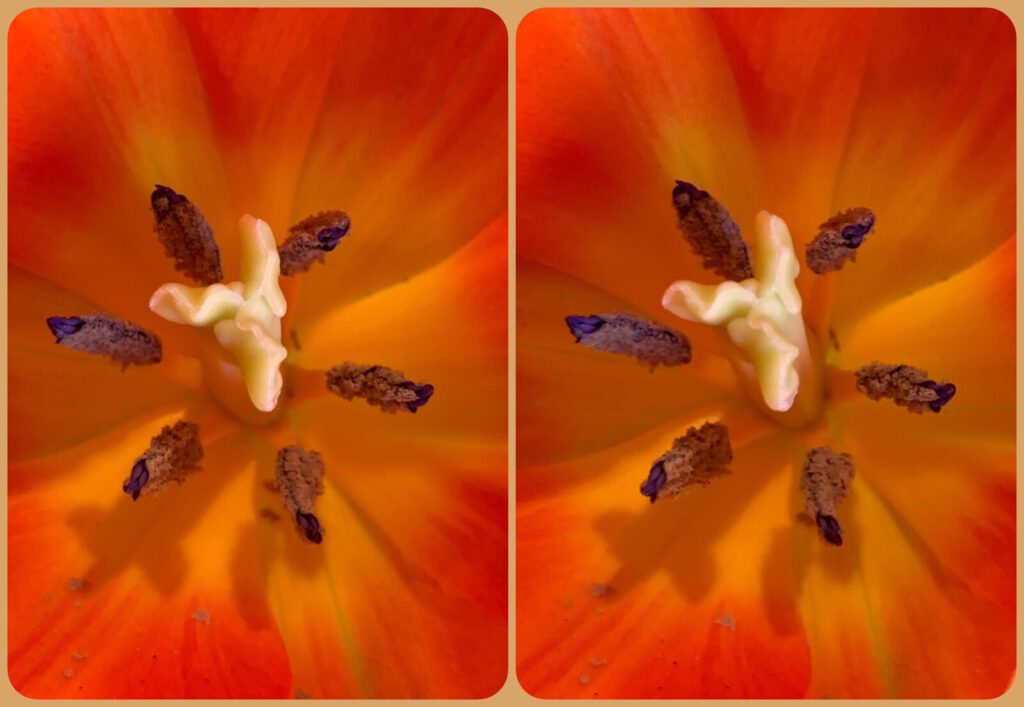
My choice of subjects varies from bugs, flowers, water drops and reflections, things with textures (such as leaves, tree barks, moss), light – anything that is likely to reveal extra detail in close up. Even simply looking at bokeh in stereo can be a magical window to A hidden world. I am more of a “photographer on the go”, and mostly rely upon a very simple and portable (and relatively inexpensive) setup that consists of my iPhone XS and a clip-on macro adapter. There are plenty of good choices available for macro adapters such as OlloClip, Moment, Apexel, and Criacr. I currently use the OlloClip and Criacr macro adapters interchangeably. This handy setup allows me to capture anything interesting that I may find on the go. The portability also makes it relatively easy for me to experiment with different angles and light, and get very close to the subject without disturbing it. This is especially helpful when photographing insects! The downside is the somewhat limited resolution, compared to a good camera and a dedicated macro lens. While this may not be a concern for platforms such as Instagram that are typically designed for viewing on a phone screen, use of phone images may present a challenge for scenarios where higher resolution is essential (such as projection on a big screen). That said, recent phone models offer very good resolution and can generate quality images. Another challenge posed by the use of sequential images to assemble a stereopair is that it can introduce discrepancies between the two images, which can lead to visual dismfort when looking at the stereo-view (retinal rivalries).
I do most of my photography during my morning walks, evening runs, and lunch breaks. Typically, I pay special attention to small patches of grass, shrubs, flowers, tree trunks (those textures!!). I keep my eyes open for subjects such as small flowers, water drops, and anything likely to have a texture. If I notice any bugs, I typically tend to follow them for a little bit, observe them, and wait for them to settle. Dragonflies, bluebottles, and hoverflies are very macro friendly, in that they tend to settle down relatively easily and stay put at one spot for some time. Dragonflies especially lend themselves beautifully to stereo photography, as they are creatures of habit, and tend to keep returning to the same spot. Once I find a subject of interest, I first like to a regular/non macro pilot stereo shot (or two) just to get a sense of the subject, the background, and the lighting. This is very helpful for scenarios when the light may not be optimal, or it may be too windy. It allows me to decide if it is worth taking photos, or simply enjoy the scene. For subjects like bugs and raindrops where getting close to the subject can potentially disturb the scene (both the subject and the lighting), this exercise also ensures that I get “something”. Once I have done this, I like to zoom in and play with one or more of the following parameters.
- Baseline: I like to do multiple takes by varying the baseline. An inappropriate baseline can ruin an otherwise beautiful concept, creating a stereopair that either doesn’t have much depth (Figure 1 A, B) or is uncomfortable to view (Figure 2 C, D). In macro stereos, even a little variation in background or bokeh can often cause a lot of visual distress (Figure 2 A‑C). Most importantly, the focus is also very sensitive to movement in macros, especially while trying to acquire sequential shots. Locking the focus and exposure settings on the phone camera can sometimes be helpful in such cases. Experimenting with the baseline helps me get sharp stereopairs with optimal depth, without too much variation in the background (thus avoiding rivalries). While the standard 1:30 rule for determining optimal baseline is just as applicable to sequential macro stereos, taking the time to calculate the right baseline may not be practical for many of the typical macro stereo subjects such as bugs. I find it simpler to just use a guesstimate to capture whatever I can within the 2–3 seconds before the bug takes off. That said, one can develop a good sense of appropriate baseline by practicing with inanimate macro subjects, and employ that in situations like the above.
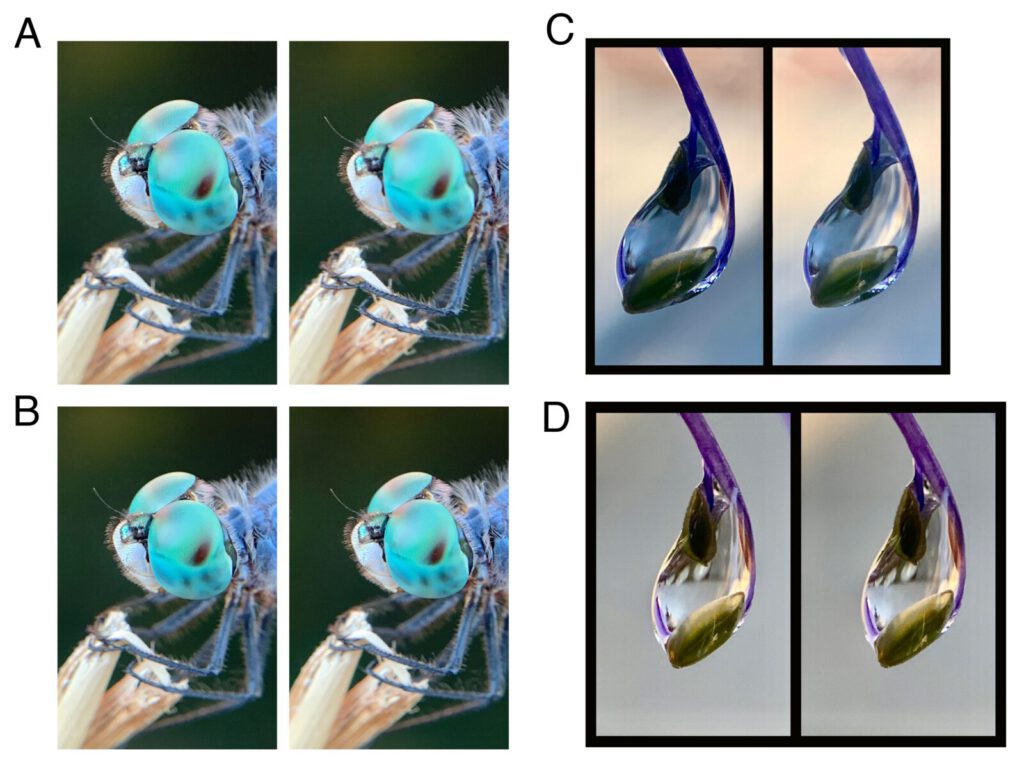
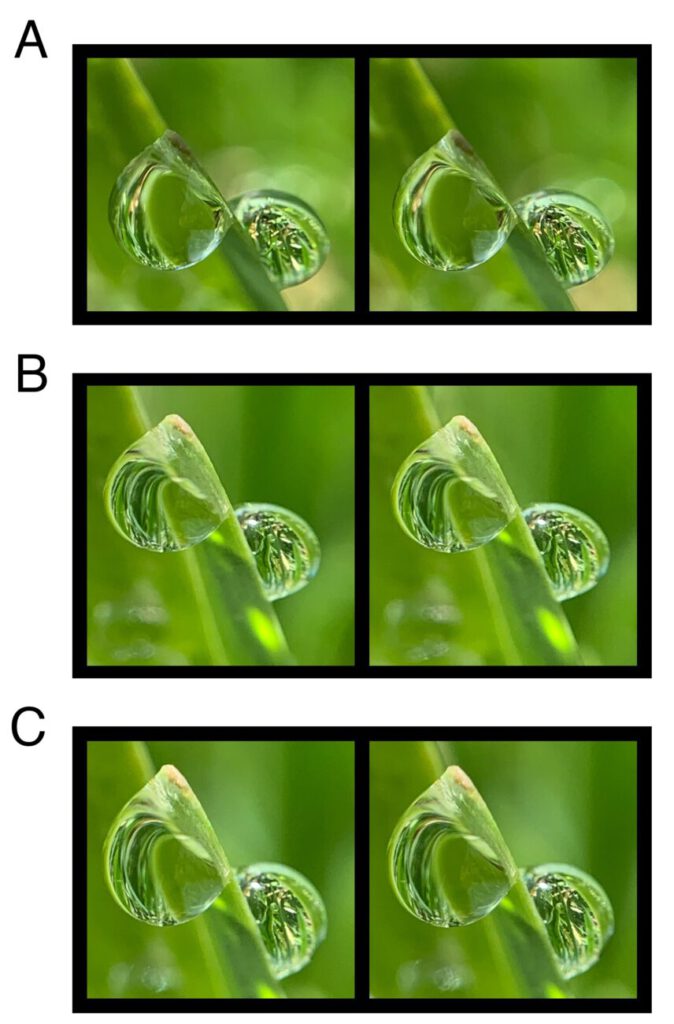
- Angle and composition: While this aspect is relevant to all stereo photography, choosing appropriate angle is especially critical while capturing a macro stereo. In a macro setting, even a slight change in the angle can potentially introduce (or eliminate) rivalries, and change the light quite significantly. One can leverage this to play with lighting (Figure 3A, B). Looking at the pilot image often serves as a guide for me to try different angles and composition. For example, one could focus on the reflections in a droplet, or zoom in on a little bug nestled in a flower, and attempt to capture unique details of the scene. By playing with different baselines and angles, I can get a good variety of distinct looking stereopairs from the same subject.
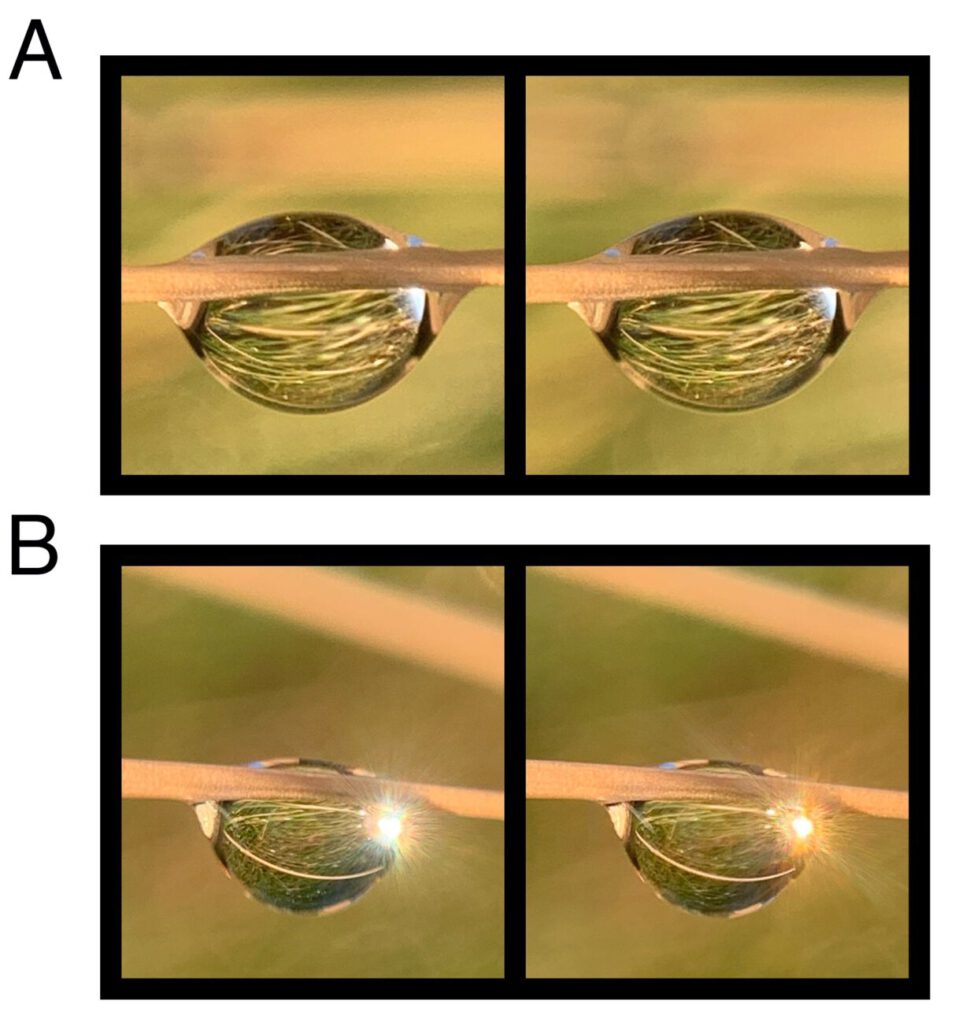
- Assembling the stereopair: I use “i3DSteroid to assemble and align my stereopairs. I live by the “crop till you drop” (or some wild approximation of that) mantra. Experimenting with cropping has often helped me compose a better stereopair, rescue many a dull/failed stereo experiments, and create something fun. Appropriate cropping can help with windowing, and also be useful in eliminating rivalries. I often also use cropping to zoom in on specific details and create multiple stereopairs from the same two sequential shots (Figure 4 A, B, C). i3DSteroid has a built in cropping tool that makes this very easy.
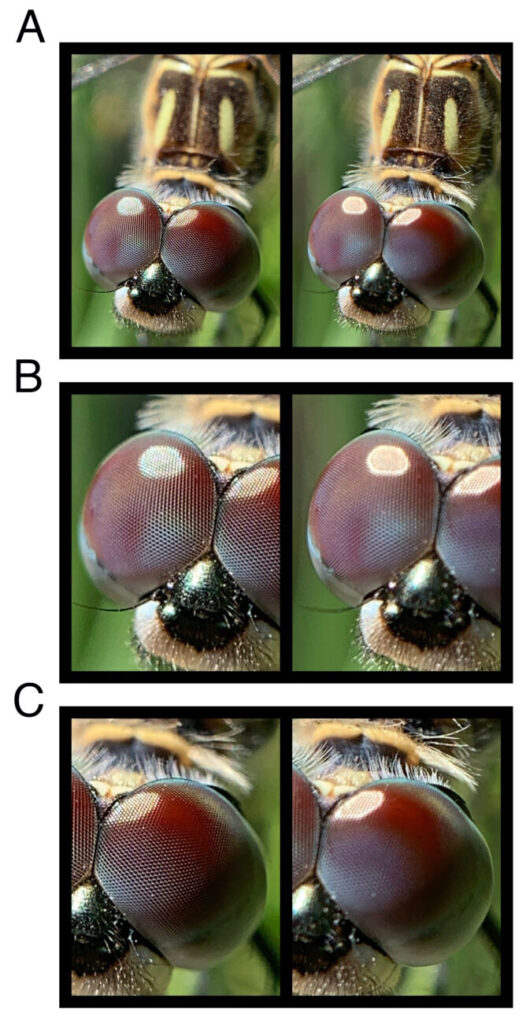
What else? One exercise that I find extremely helpful is to step away from my images for a bit and review them later. This can provide a fresh perspective on what worked and what did not. While this is applicable to all photography, it is especially helpful for macros, as reviewing an image later can help identify a better area to zoom on or a better way of cropping etc. Overall, macro stereo photography is a medium that offers the viewer a greater appreciation of the hidden beauty that exists in nature, and inspires the photographer to pay attention to even the smallest details. I hope you enjoy exploring this medium and have fun finding new detail in the things around you!
Sangeeta Dhawan (Los Angeles, California, USA)
I am a bio-scientist and a photography enthusiast. I took up photography about ten years ago, and started my journey into the world of stereo-photography last year. Stereos have a way of transforming something ordinary into extraordinary and magical. As someone who looks at things at the cellular level on a daily basis, I was particularly drawn to macro stereo photography. That’s my kind of magic. I look forward to continue sharing my stereo adventures with you.
Instagram-profile: musiquenonstop

